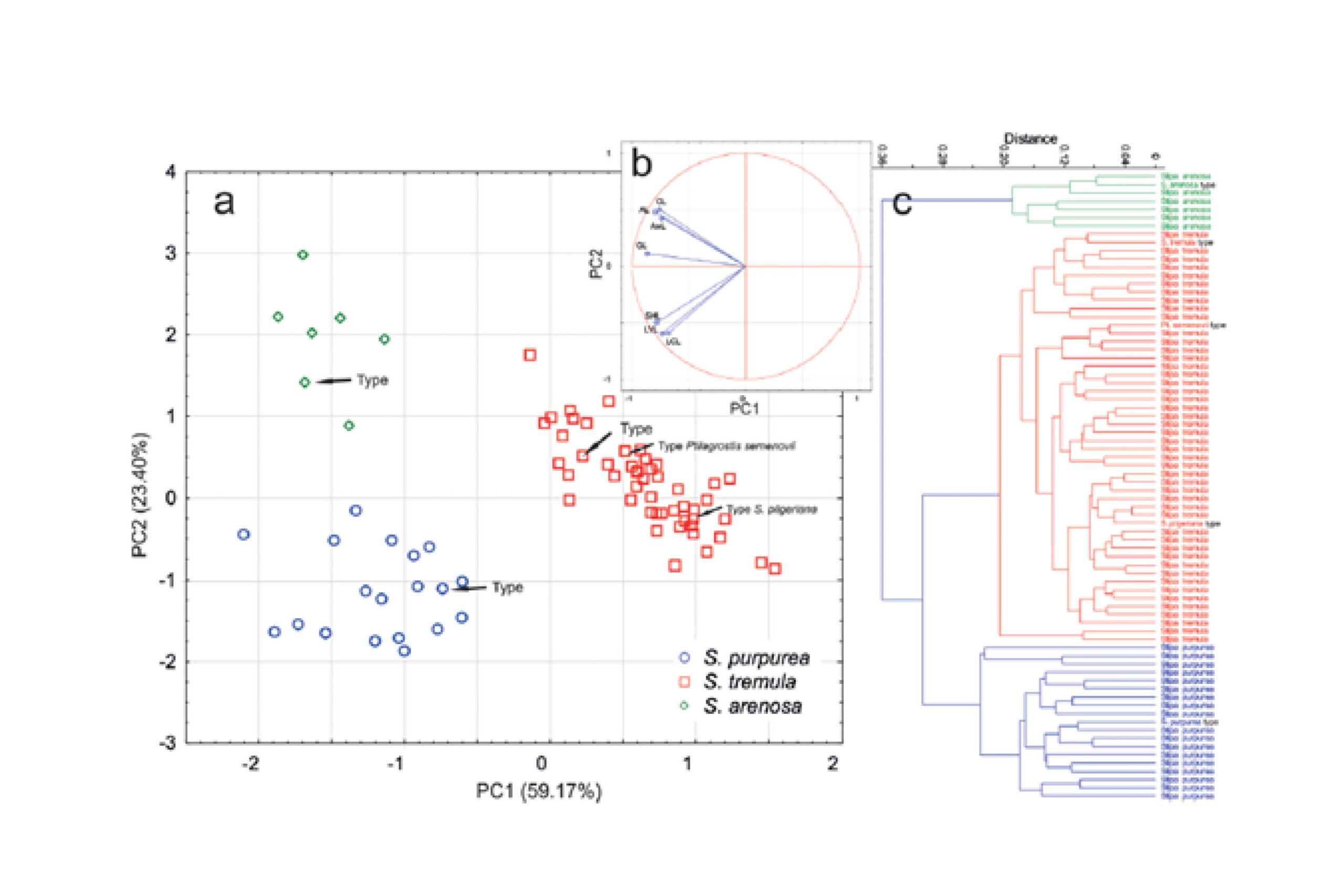Praca wykonana pod kierunkiem prof. Marcina Nobisa z Uniwersytetu Jagiellońskiego dotyczy przede wszystkim Stipa purpurea. Jest to wysokogórski gatunek, który występuje na kriofilnych stepach, półpustyniach i kamienistych zboczach, od Tian Shan i Płaskowyżu Pamirskiego przez Płaskowyż Qinghai-Xizang po Himalaje i charakteryzuje się dużą zmiennością morfologiczną. Analizy numeryczne (PCA i UPGMA) ujawniły trzy grupy OTU odpowiadające trzem morfotypom w obrębie kompleksu S. purpurea. Zaproponowano dwie nowe kombinacje (S. tremula i S. arenosa), opisano nowego mieszańca (S. ×ladakhensis), który powstał w wyniku hybrydyzacji między S. klimesii i S. purpurea s.l. oraz wyznaczono lektotyp dla Ptilagrostis semenovii. Przedstawiono również klucz identyfikacyjny i szczegółowy opis morfologiczny gatunków z kompleksu S. purpurea.

Abstract
Stipa purpurea is a high-alpine species that occurs in cryophilous steppes, semi-deserts and stony slopes, from the Tian Shan and Pamirian Plateau through Qinghai-Xizang Plateau to the Himalayas and is characterised by a great morphological variability. During the revision of specimens of the taxon, we observed that the pattern of this variability is linked to the geographical distribution of the specimens. Numerical analyses (PCA and UPGMA) revealed three groups of OTUs corresponding to three morphotypes within the S. purpurea complex. A set of macro- and micromorphological characters, supported by a map of general distributional ranges, are presented to distinguish each of the three taxa within the complex and we reassess the status of Lasiagrostis tremula described by Ruprecht in 1869. As a result, Stipa tremula, S. purpurea and S. arenosa were distinguished within the complex. The intermediate characters of S. arenosa may suggest its putative hybrid origin (S. tremula × S. purpurea), whereas the presence of extremely long florets may be an expression of the gigas effect. We propose two new combinations (S. tremula and S. arenosa), describe a new nothospecies (S. ×ladakhensis) that originated from hybridisation between S. klimesii and S. purpurea s.l. and designate the lectotype for Ptilagrostis semenovii. An identification key and detailed morphological description of species from the S. purpurea complex are also presented.
Nobis M., Krzempek M., Nowak A., Gudkova P.D., Klichowska E. 2022. Resurrection of Stipa tremula and taxonomy of the high-alpine species from the Stipa purpurea complex. PhytoKeys 196: 21–47. doi: 10.3897/phytokeys.196.82598
